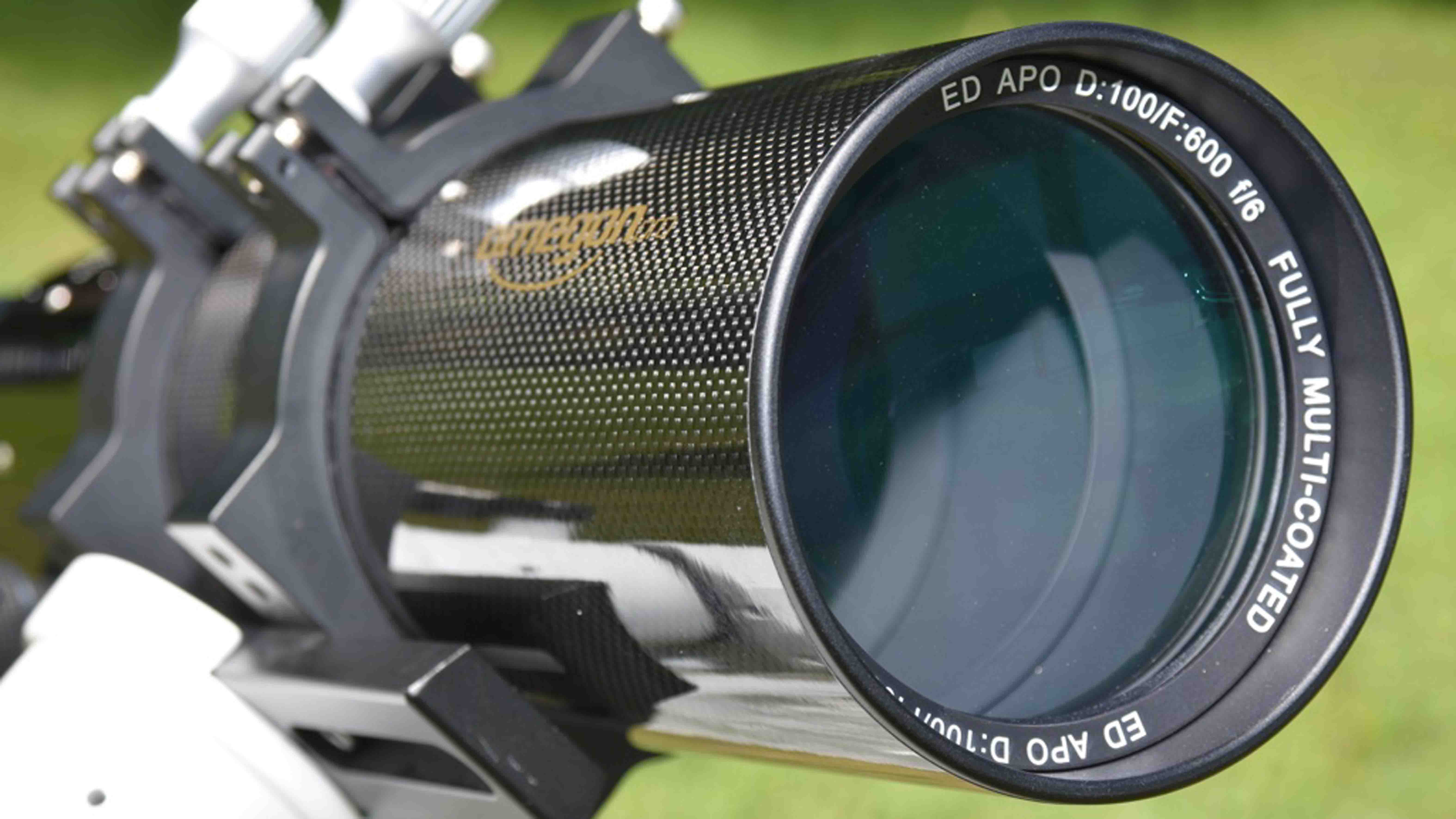Objective lenses
Telescope lenses are manufactured using various materials. But what are they, and how do they differ?

When most people think of an astronomical telescope, they imagine the classic lens telescope with a lens at the front, and an eyepiece to look through at the back. Although they have largely been replaced by mirror telescopes for professional use, lens telescopes still have many fans among amateur astronomers.
The most important component of a lens telescope is the objective lens. To be more precise, the objective lenses, because every modern objective consists of at least 2 lens elements. But why is that?
Achromats: fighting chromatic aberration
Lenses have one big disadvantage compared to mirrors: they suffer from colour defects known as chromatic aberration. Light is refracted differently depending on its wavelength, blue light refracts more than red light. The result: unattractive colour fringes around the object you are observing and reduced contrast.
The objective lens of a Fraunhofer achromat consists of a convex front lens made of crown glass and a concave rear lens made of flint glass. This combination of different types of glass reduces chromatic aberration and increases contrast and colour fidelity.
Fraunhofer-style achromats with carefully selected BK7-F2 glass combinations are more than adequate as entry-level telescopes. However, as your experience increases over time, you are likely to turn to higher-quality apochromats.
Apochromats: the specialists for the highest quality image
Apochromats go one step further. A clever selection of glass types ensures that light of up to three wavelengths meet at a common focal point - even in compact telescopes.
By using a third lens and expensive special glass, these top-quality telescopes do not only deliver a true-colour image, but are also free from coma and spherical aberration. The designers use different types of glass in order to create such high quality lenses. The determining factors here are the refractive index and the Abbe value.
The refractive index refers to the ratio of the speed of light in a vacuum and the speed of light in a particular material at a given wavelength. The Abbe value of a material indicates the variation in the refractive index with changes in wavelength, known as dispersion.
The higher the refractive index, the more light is refracted, so the lens can be less curved. This reduces spherical aberration, but highly refractive glass types are usually more expensive. Glass combinations with a high Abbe value have lower colour dispersion and thus reduced chromatic aberration.
Today, there are more than 200 known optical glass combinations. The majority are derived from the two most important families of glass: crown glass and flint glass. There are many optical and material-specific parameters relevant in industrial production. Many manufacturers offer glass with the same properties under different brand names. Nowadays, most of them design their products and processes in an environmentally friendly way and do not, for example, use mixtures of lead and arsenic.
Special glass for perfect images
Bear in mind that the use of FPL-53 is not chosen over FPL-51 in order to improve an objective’s chromatic aberration, but rather to reduce the focal ratio. This is an important factor in astrophotography when it comes to short exposure times and larger fields of view. Thus, an FPL-51 doublet refractor could have a focal ratio of 1:6.8, while a telescope with the same aperture using an FPL-53 doublet would have a focal ratio of 1:6 or 1:6.25. Experience shows that both have similar low chromatic aberration.
Triplet lens systems using both FPL-51 and FPL-53 tend to further reduce chromatic aberration, thus enabling even sharper images. Differences within this quality class can only be detected by measurements on an optical test bench.
